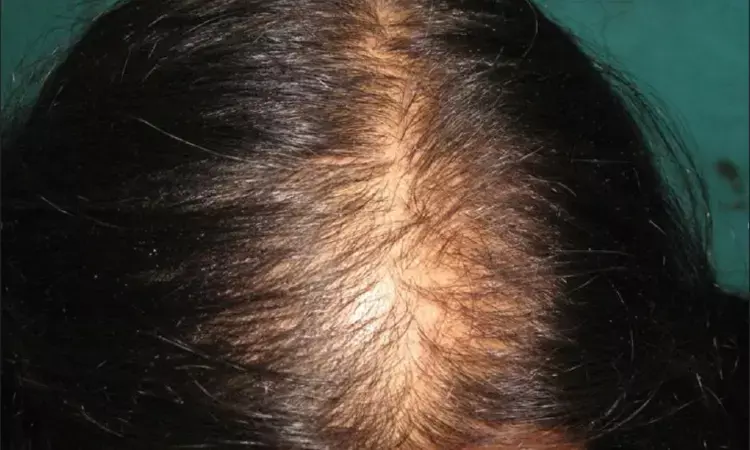- Home
- Medical news & Guidelines
- Anesthesiology
- Cardiology and CTVS
- Critical Care
- Dentistry
- Dermatology
- Diabetes and Endocrinology
- ENT
- Gastroenterology
- Medicine
- Nephrology
- Neurology
- Obstretics-Gynaecology
- Oncology
- Ophthalmology
- Orthopaedics
- Pediatrics-Neonatology
- Psychiatry
- Pulmonology
- Radiology
- Surgery
- Urology
- Laboratory Medicine
- Diet
- Nursing
- Paramedical
- Physiotherapy
- Health news
- Fact Check
- Bone Health Fact Check
- Brain Health Fact Check
- Cancer Related Fact Check
- Child Care Fact Check
- Dental and oral health fact check
- Diabetes and metabolic health fact check
- Diet and Nutrition Fact Check
- Eye and ENT Care Fact Check
- Fitness fact check
- Gut health fact check
- Heart health fact check
- Kidney health fact check
- Medical education fact check
- Men's health fact check
- Respiratory fact check
- Skin and hair care fact check
- Vaccine and Immunization fact check
- Women's health fact check
- AYUSH
- State News
- Andaman and Nicobar Islands
- Andhra Pradesh
- Arunachal Pradesh
- Assam
- Bihar
- Chandigarh
- Chattisgarh
- Dadra and Nagar Haveli
- Daman and Diu
- Delhi
- Goa
- Gujarat
- Haryana
- Himachal Pradesh
- Jammu & Kashmir
- Jharkhand
- Karnataka
- Kerala
- Ladakh
- Lakshadweep
- Madhya Pradesh
- Maharashtra
- Manipur
- Meghalaya
- Mizoram
- Nagaland
- Odisha
- Puducherry
- Punjab
- Rajasthan
- Sikkim
- Tamil Nadu
- Telangana
- Tripura
- Uttar Pradesh
- Uttrakhand
- West Bengal
- Medical Education
- Industry
Female pattern hair loss prevalent in half of postmenopausal women

Thailand: A new study shows that female pattern hair loss (FPHL) was common in postmenopausal women, emphasizing the importance of hair loss education in menopause clinics. This study was conducted by Sukanya Chaikittisilpa and the team. The findings of this work were published in the journal Menopause on 14th February 2022.
The female pattern of hair loss is the most frequent kind of hair loss in women. It is distinguished by progressive thinning at the portion line, which is followed by increased diffuse hair loss spreading from the crown of the head. Female pattern hair loss can appear at any age between adolescence and menopause. However, because estrogen receptors are found in hair follicles, it is thought that estrogen loss during the menopausal transition may have a role in accelerating FPHL. Hormone changes associated with menopause have been proven to impact scalp hair, diminish hair diameter, and inhibit hair growth.
The purpose of this study was to determine the prevalence of female pattern hair loss, hair features, and related variables in healthy postmenopausal women, thereby 200 postmenopausal women between the ages of 50 and 65 were recruited. Each subject was tested for FPHL using standardized global photography in all six perspectives and diameter using Ludwig's categorization and trichoscopy for hair density. 3 dermatologists re-evaluated all of the images to confirm the presence of FPHL. The duration since levels of scalp sebum, menopause, estradiol, serum testosterone, thyroid-stimulating hormone, and hemoglobin, as well as a family history of hair loss and an assessment of poor self-esteem, were all analyzed. Women who have recently had hair loss treatments were not eligible. To determine the variables influencing FPHL, this study utilized both basic and multivariate logistic regression analysis.
The key findings of this study were as follow:
1. 178 postmenopausal women were tested for hair-loss trends in total.
2. The average age and length of time since menopause was 58.8+/-4.1 and 9.2+/- 5.6 years, respectively.
3. FPHL was found in 52.2% of people. The severity of FPHL was determined by Ludwig grades I, II, and III, which were 73.2%, 22.6%, and 4.3%, respectively.
4. Age, body mass index, and time since menopause were all found to be substantially linked with FPHL using logistic regression analysis.
5. After controlling for age and family history of FPHL, only a BMI of 25 kg/m2 was shown to be substantially linked with FPHL.
In conclusion, this small cross-sectional investigation showed, female pattern hair loss was common and related to decreased self-esteem in healthy postmenopausal women. A deeper knowledge of the processes underlying this prevalent kind of female hair loss might lead to more effective prevention measures and treatment alternatives.
Reference:
Chaikittisilpa, S., Rattanasirisin, N., Panchaprateep, R., Orprayoon, N., Phutrakul, P., Suwan, A., & Jaisamrarn, U. (2022). Prevalence of female pattern hair loss in postmenopausal women. In Menopause: Vol. Publish Ahead of Print. Ovid Technologies (Wolters Kluwer Health). https://doi.org/10.1097/gme.0000000000001927
Keywords: Alopecia, Androgen, Hair loss, Menopause, trichoscopy, estradiol, hormone therapy, hemoglobin, dermatology, baldness, Menopause journal
Medical Dialogues consists of a team of passionate medical/scientific writers, led by doctors and healthcare researchers. Our team efforts to bring you updated and timely news about the important happenings of the medical and healthcare sector. Our editorial team can be reached at editorial@medicaldialogues.in.
Dr Kamal Kant Kohli-MBBS, DTCD- a chest specialist with more than 30 years of practice and a flair for writing clinical articles, Dr Kamal Kant Kohli joined Medical Dialogues as a Chief Editor of Medical News. Besides writing articles, as an editor, he proofreads and verifies all the medical content published on Medical Dialogues including those coming from journals, studies,medical conferences,guidelines etc. Email: drkohli@medicaldialogues.in. Contact no. 011-43720751


